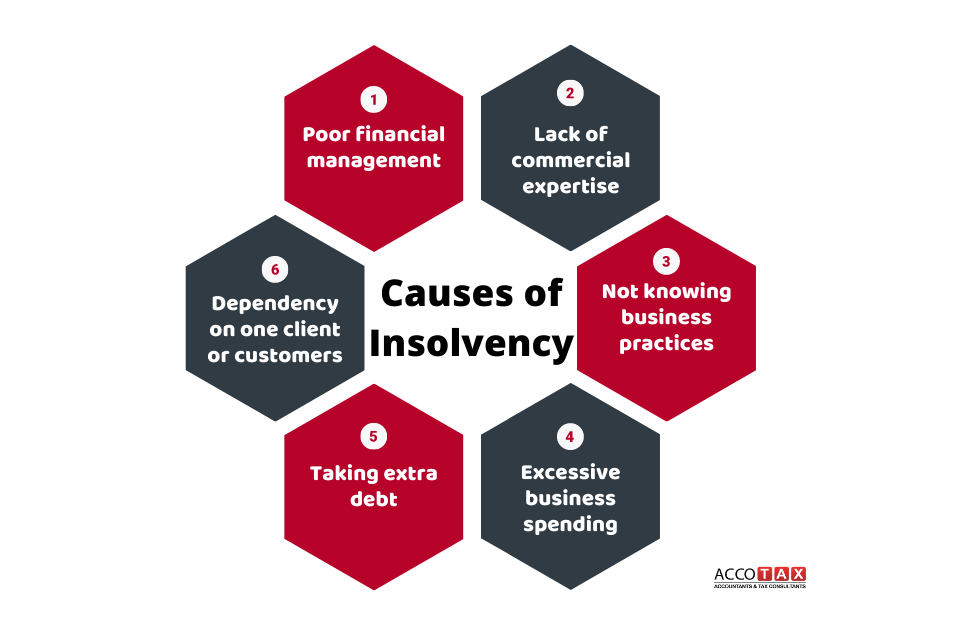The Ultimate Guide To Insolvency Practitioner
The Ultimate Guide To Insolvency Practitioner
Blog Article
Some Of Insolvency Practitioner
Table of Contents8 Easy Facts About Insolvency Practitioner ShownThe Only Guide to Insolvency PractitionerNot known Factual Statements About Insolvency Practitioner The Only Guide for Insolvency PractitionerRumored Buzz on Insolvency PractitionerInsolvency Practitioner Fundamentals ExplainedIndicators on Insolvency Practitioner You Need To Know
Bankruptcy is when obligations are greater than the worth of the company, or when a debtor can not pay the financial obligations they owe. A company can become financially troubled due to a variety of scenarios that bring about inadequate capital. When encountered with insolvency, a business or individual can speak to creditors directly and restructure financial obligations to pay them off.Organization owners may get in touch with creditors directly and restructure financial obligations right into more workable installations. Creditors are normally open to this strategy since they want to be settled and avoid losses, even if the settlement is on a postponed schedule.
Insolvency Practitioner Can Be Fun For Everyone
The owner creates a proposition detailing how the financial obligation might be restructured using expense decreases or various other prepare for assistance. The proposal reveals creditors exactly how the organization may produce adequate money flow for successful operations while paying its financial obligations. Usually, a forgiven financial obligation might be taken into consideration revenue by the Internal Earnings Service (INTERNAL REVENUE SERVICE).

Some Ideas on Insolvency Practitioner You Need To Know
The business might finish up paying big quantities of money in problems and be unable to continue operations. When procedures cease, so does the company's revenue. Lack of income leads to accounts payable and creditors asking for cash owed to them. Some firms become financially troubled due to the fact that their goods or services don't advance to fit consumers' changing demands.
Expenses go beyond revenues and costs stay overdue. Cash-flow insolvency happens when a firm has the assets to cover their debts however they are in the wrong type, such as real estate rather of liquid funds. Balance-sheet bankruptcy, on the various other hand, shows an absence of properties in any type to cover financial debts.
The internal revenue service states that an individual is financially troubled when the complete liabilities exceed overall assets. A insolvency, on the other hand, is a real court order that illustrates exactly how a bankrupt individual or company will certainly settle their lenders, or how they will sell their properties in order to make the payments.
The Facts About Insolvency Practitioner Uncovered

Financial obligation debt consolidation is when you combine several car loans into one new funding, usually to accomplish better terms. Bankruptcy is not the same as insolvency, although a business that has actually come to be financially troubled might declare personal bankruptcy. Insolvency is the state of not having the ability to pay your obligations while bankruptcy is a lawful process to discharge your financial obligations.
Comprehending the variables that can bring about insolvency, such as overspending, can assist you avoid insolvency and its effects.
The Main Principles Of Insolvency Practitioner
It is well known that directors and officers of firms (and managers of minimal responsibility business) owe fiduciary duties to their organizations and their shareholders (or participants). These fiduciary obligations are specified by state laws and, though there are variants from one state to another, they generally consist of an obligation of commitment and a responsibility of care.
The responsibility of care needs supervisors and policemans to exercise persistance, to make informed decisions, and to act in good confidence to ensure that their actions remain in the most effective rate of interest of the firm. Beyond the scope of this conversation, some states allow these responsibilities to be restricted either by so noting in the organizational records or complying with various other demands.
Examine This Report about Insolvency Practitioner
A lot of states specify insolvency in two methods( 1) when a firm's responsibilities become above the amount of its properties or (2) when the business ends up being incapable to pay its debts as they become dueand welcome both definitions look these up (Insolvency Practitioner). The shift in duties happens because when a business is financially troubled, check this there is no worth in the company past that owed to the firm's creditors so that the equity owners no longer have an economic risk in the firm
Take care about giving investors preferential therapy at the expenditure of creditors (e.g., accrediting and moneying a dividend or a supply redemption). Take care regarding favoritism in between classes of investors. Clear up initiatives to learn all the facts before taking a specific strategy; directors must really think that any kind of choices made are in the most effective interests of the firm in its entirety (i.e., choices will be reviewed in hindsight because of the result of such activities on the corporation).
In any type of insolvency or insolvency proceeding, payments made to specific lenders at the expense of various other creditors can be clawed back, particularly if there is some connection in between the business and the creditor. Consider proposing at an annual shareholder meeting (or any kind of other conference of investors) a resolution verifying that all prior organization choices and actions taken by the supervisors and officers of the firm were taken in excellent faith after a workout of sensible care.
Getting The Insolvency Practitioner To Work
Fully reveal any individual or organization partnerships with parties on the various other side of purchases involving the company to avoid the appearance of a conflict of rate of interest. In evaluating possible fund elevating purchases or a sale of properties of the troubled company, be conscious that these purchases may be looked at later on because of any type of subsequent growth of directors' fiduciary responsibilities to consist of creditors.
Report this page